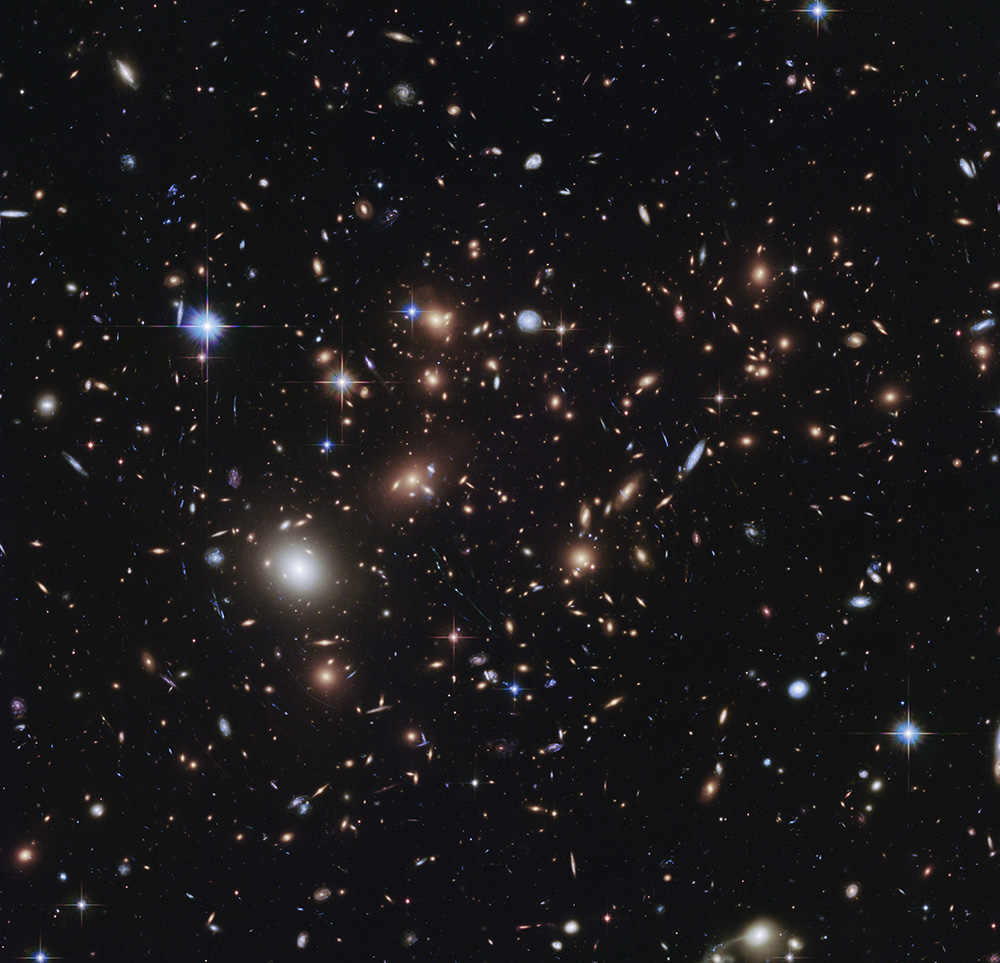
MACS J0717.5+3745 (Epoch 1) (2014)
The ACS data have been collected for the third Frontier Field, the impressively massive galaxy cluster MACS J0717. Said to be the largest known gravitational lens, it certainly is a sight to behold. Check out this post at the Frontier Fields blog. (Watch out, it’s snowing over there!)
As a personal observation, the lensed galaxies in this image seem much thinner or wispier, like more of them have been stretched more extremely than average in the previous two fields.
I think I managed to process this one better, too. More faint objects are visible and there is less noise. I ended up accomplishing this first by simply being more careful with my curve adjustments and second by having the F814W layer duplicated and set to luminosity. That means this isn’t a perfect representation of the brightness levels throughout the image but it’s a fair trade for how much clearer things are made. For example, the delicate shells and a swarm of globular clusters are easily visible around the large, whitish elliptical galaxy a little left and below center.
I don’t know if it’s just me but the quality of the data seems somewhat improved for this iteration, also. As always, the Frontier Fields data is a pleasure to work with. It’s a joy to zoom up close, pan around, and just let oneself be awed by the unfettered majesty of the heavens.
FITS files can be found here:
archive.stsci.edu/pub/hlsp/frontier/macs0717/images/hst/v…
Red: ACS/WFC F814W (hlsp_frontier_hst_acs-30mas-selfcal_macs0717_f814w_v1.0-epoch1_drz)
Green: ACS/WFC F606W (hlsp_frontier_hst_acs-30mas-selfcal_macs0717_f606w_v1.0-epoch1_drz)
Blue: ACS/WFC F435W (hlsp_frontier_hst_acs-30mas-selfcal_macs0717_f435w_v1.0-epoch1_drz)
North is NOT up. It is 9.9° clockwise from up.
Copyright information:
Hubble data is public domain, but I put a lot of work into combining it into beautiful color images. The minimal credit line should read: NASA / ESA / J. Schmidt

This work is licensed under a Creative Commons Attribution 3.0 Unported License.


